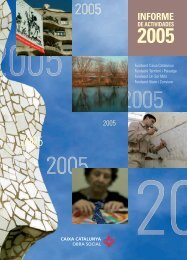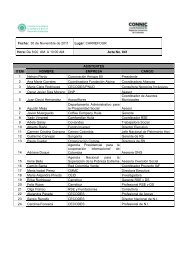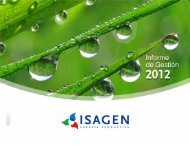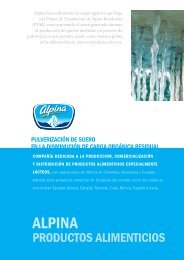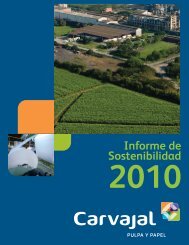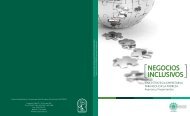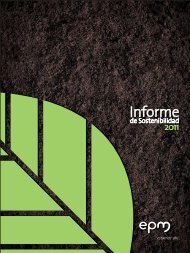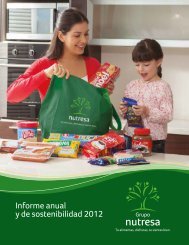Setting new standards - Friends Life
Setting new standards - Friends Life
Setting new standards - Friends Life
You also want an ePaper? Increase the reach of your titles
YUMPU automatically turns print PDFs into web optimized ePapers that Google loves.
PARENT COMPANY ACCOUNTS<br />
ABBREVIATIONS AND DEFINITIONS<br />
Notes to the EEV results<br />
1. Methodology<br />
1.1 Basis of preparation<br />
The EEV results presented in this document have been prepared in<br />
accordance with the European Insurers’ Chief Financial Officers<br />
Forum’s EEV Principles issued in May 2004 and the Additional<br />
Guidance issued in 2005. They provide supplementary information<br />
for the year ended 31 December 2006.<br />
The EEV basis of reporting is designed to recognise profit as it is<br />
earned over the term of the policy. The total profit recognised over<br />
the lifetime of the policy is the same as that recognised under the<br />
IFRS basis of reporting, but the timing of recognition is different.<br />
The reported embedded value provides an estimate of the value of<br />
shareholders’ interest in the covered business, excluding any value<br />
that may be generated from future <strong>new</strong> business. This value<br />
comprises the sum of the shareholders’ net worth, the provision for<br />
future corporate costs and the value of existing business. The<br />
shareholders’ net worth is the net assets attributable to shareholders,<br />
and is represented by the sum of required capital and free surplus.<br />
The value of existing business is the present value of the projected<br />
stream of future distributable profits available to shareholders from<br />
the existing business at the valuation date, on a best estimate basis<br />
allowing for risk, adjusted for the cost of holding required capital.<br />
The supplementary information should be read in conjunction with the<br />
Group’s IFRS results. These contain information regarding the Group’s<br />
financial statements prepared in accordance with IFRS issued by the<br />
International Accounting Standards Board and adopted for use in the EU.<br />
The results for covered business as reported under EEV principles<br />
are combined with the results for the remainder of the business<br />
reported in accordance with IFRS, except where EEV principles<br />
dictate otherwise. In particular the EEV principles have been applied<br />
to reflect Step-up Tier one Insurance Capital Securities (STICS) as<br />
debt rather than equity.<br />
In addition, a pro forma embedded value is reported showing<br />
ordinary shareholders’ funds on an EEV basis adjusted to include the<br />
F&C listed subsidiary at market value.<br />
Shareholders’ net assets on an EEV basis for the Group consist of<br />
the following:<br />
• <strong>Life</strong> & Pensions net assets;<br />
• the Group’s share of its investment in the Asset Management<br />
business (including the net pension liability) on an IFRS basis;<br />
• corporate net assets;<br />
• the net pension liability of FPPS on an IAS 19 basis but, in 2005,<br />
including holdings in non-transferable securities issued by the<br />
Group (both net of deferred tax);<br />
• the provision for future corporate costs;<br />
• the present value of future profits attributable to shareholders from<br />
existing policies of the <strong>Life</strong> & Pensions business.<br />
It is currently expected that the final consideration in respect of the<br />
Lombard acquisition will be settled by way of shares and cash.<br />
Provision has been made in 2006 for the estimated cash element of<br />
the final earn-out payment.<br />
The shareholders’ net worth includes the corporate debt of the Group.<br />
This debt is valued at market value, consistent with the EEV guidance.<br />
EEV and other balance sheet items denominated in foreign<br />
currencies have been translated to sterling using the appropriate<br />
closing exchange rate. The <strong>new</strong> business contribution and other<br />
income statement items have been translated using an average<br />
exchange rate for the relevant period.<br />
1.2 Covered business<br />
The covered business incorporates the <strong>Life</strong> & Pensions business<br />
defined as long-term business by UK and overseas regulators.<br />
The Asset Management business is not included in the definition of<br />
covered business.<br />
1.3 Allowance for risk<br />
The allowance for risk in the shareholder cash flows is a key feature<br />
of the EEV Principles. The EEV guidance sets out three main areas<br />
available to allow for risk in an embedded value:<br />
• the risk discount rate;<br />
• the allowance for the cost of financial options and guarantees;<br />
• the cost of holding both prudential reserves and any additional<br />
required capital.<br />
The market-consistent approach has been used to allow for risk in all<br />
three areas.<br />
1.4 Deriving risk discount rates<br />
A market-consistent embedded value has been calculated for each<br />
product line by valuing the cash flows in line with the prices of<br />
similar cash flows traded on the open market.<br />
In principle, each cash flow is valued using the discount rate<br />
consistent with that applied to such a cash flow in the capital<br />
markets. For example, an equity cash flow is valued using an equity<br />
risk discount rate, and a bond cash flow is valued using a bond risk<br />
discount rate. If a higher return is assumed for equities, the equity<br />
cash flow is discounted at this higher rate.<br />
In practice, for liabilities where the payouts are either independent or<br />
move linearly with market movements, a method known as the<br />
‘certainty equivalent approach’ has been applied whereby all<br />
assumed assets earn the risk-free rate and all cash flows are<br />
discounted using the risk-free rate. This gives the same result as<br />
applying the method in the previous paragraph.<br />
<strong>Friends</strong> Provident Annual Report & Accounts 2006 169







